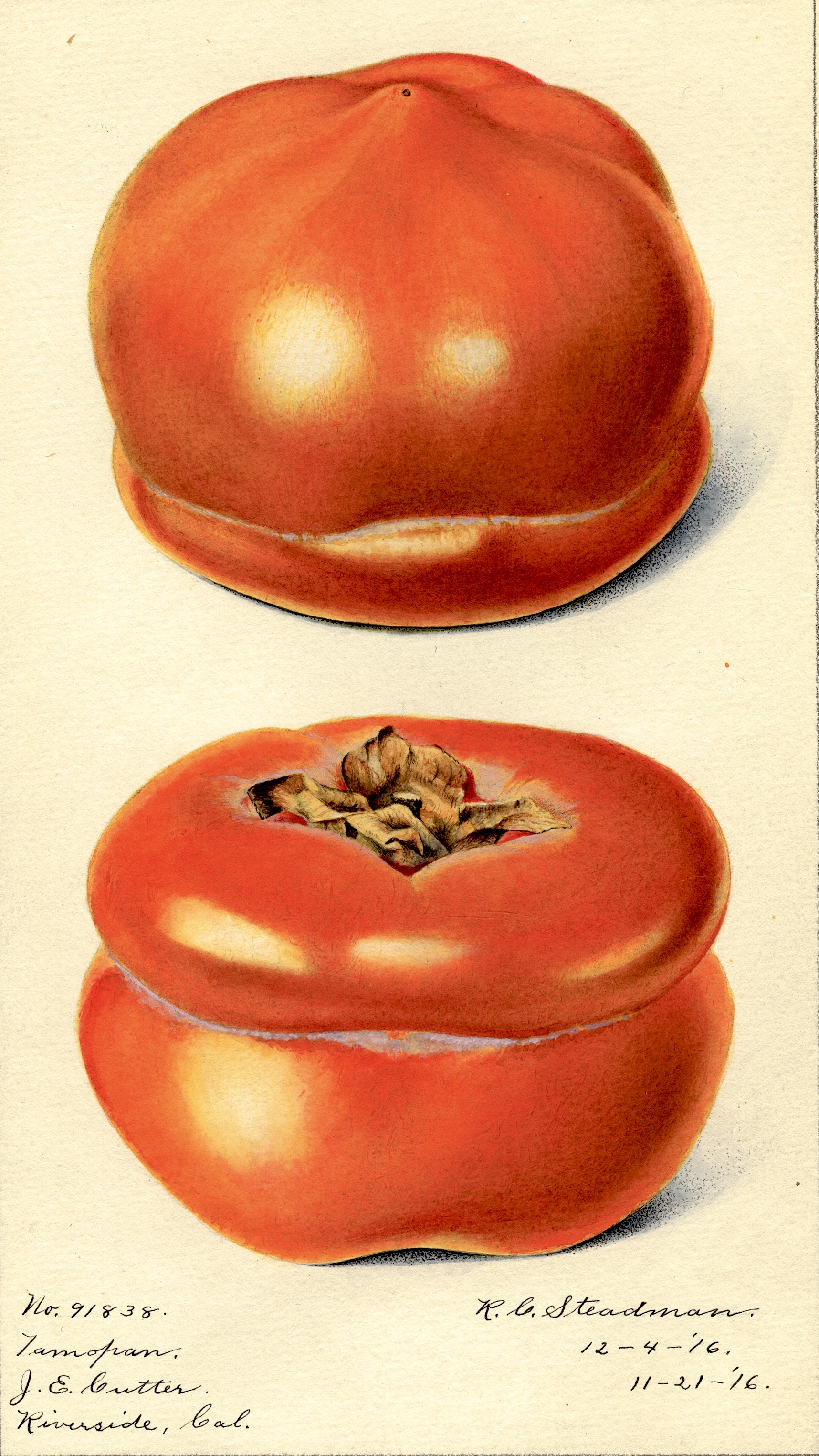 TAMOPAN
TAMOPAN
The most thick-skinned of the large astringent Asian Persimmons, the Tamopan must be allowed to thoroughly ripen and assume a jellied sweetness before eating. The fruit is often eaten out of its pumpkin orange skin with a spoon. The shape—like an acorn with its cap—is absolutely distinctive among kaki persimmons. To the Japanese, the configuration of the fruit reminded people of a grindstone, and so they named the fruit. In 1905 the U.S.D.A. introduced it from China where it had been discovered by Frank Meyer, he was sufficiently novel and sufficiently large to attract a cadre of growers, particularly in California. With special management, a Tamopan fruit can reach 5 inches across. Self-fertile the tree needs over 200 chill hours to set fruit.
“The fruit is late in season and merites the requirements for the holiday trade. It is large and has a distinctive shape differing from most other varieties being marked by a constriction from a quarter to halfway down on the fruit. This skin is unusually tough and will hold its shape, making a natural cup from which the pulp can be spooned, even when the fruit is fully ripe and the flesh is almost of a watery consistency. The quality is very good, not quite as rich as the Hachiya but more pleasing to some.” K. Ryerson, “Culture of the Oriental Persimmon in California,” Bulletin California Experimental Station #416 (January 1927), 24-25.
The Tamopan, because a fruit could weigh up to a pound, captured the attention of southerners as early as 1912. Its size was impressive, but its tough skin had costs as well as benefits. Some found it unpalatable and difficult to peel, while growers appreciated its ability to inhibit insect depradation. Its most ardent champion was Joe P. Wilson of Landon, Mississippi, who began advertising the variety in 1913 and operated as a nursery for the trees through the 1920s. Newspapers readers were introduced by Wilson to the variety with these words: "The Tamopan, Largest Persimmon known, very rapid grower and makes fine shade tree, growing 60 feet tall" Gulfport Daily Herald, March 11, 1913, p4. Wilson commanded $1.50 per dozen fruit in northern markets from his initial harvests, a huge sum in that day.
Image: U.S. Department of Agriculture Pomological Watercolor Collection. Rare and Special Collections, National Agricultural Library, Beltsville, MD 20705, Royal Steadman, 1913.
David S Shields